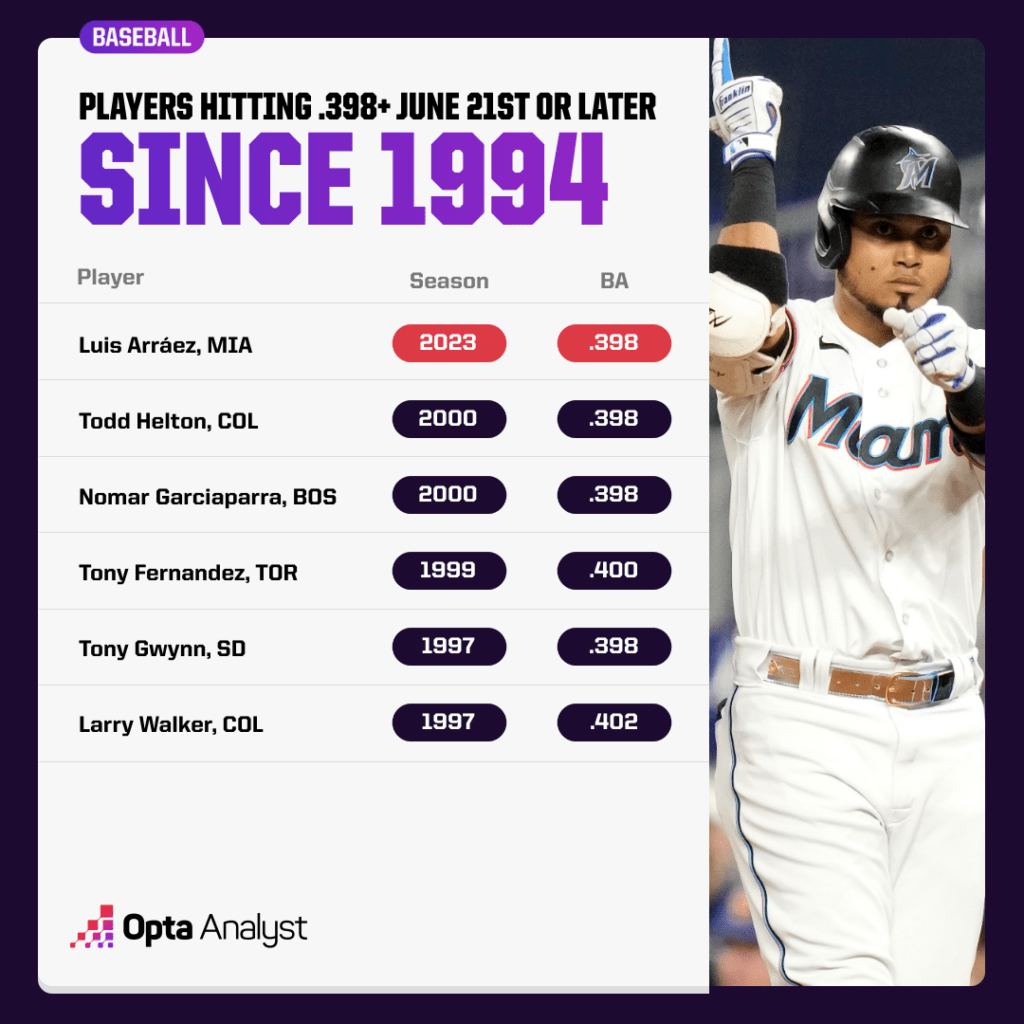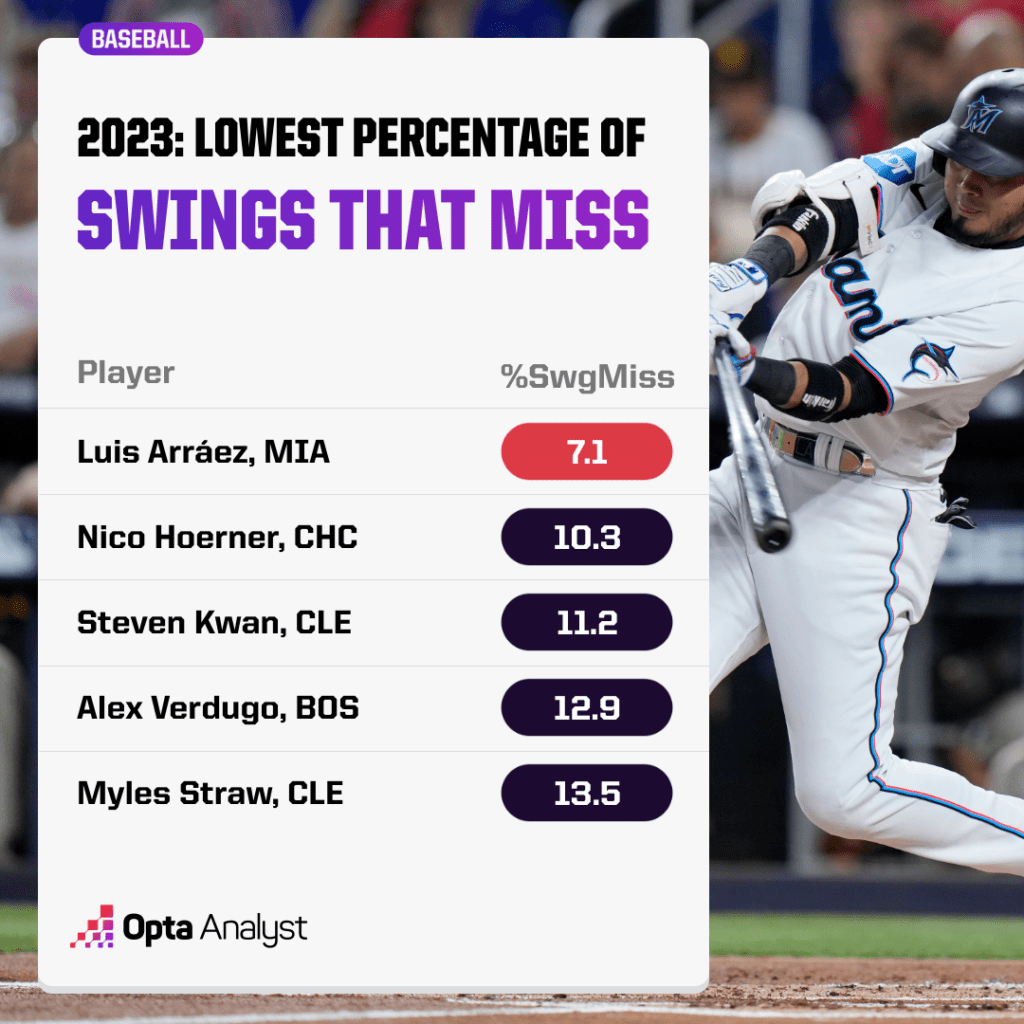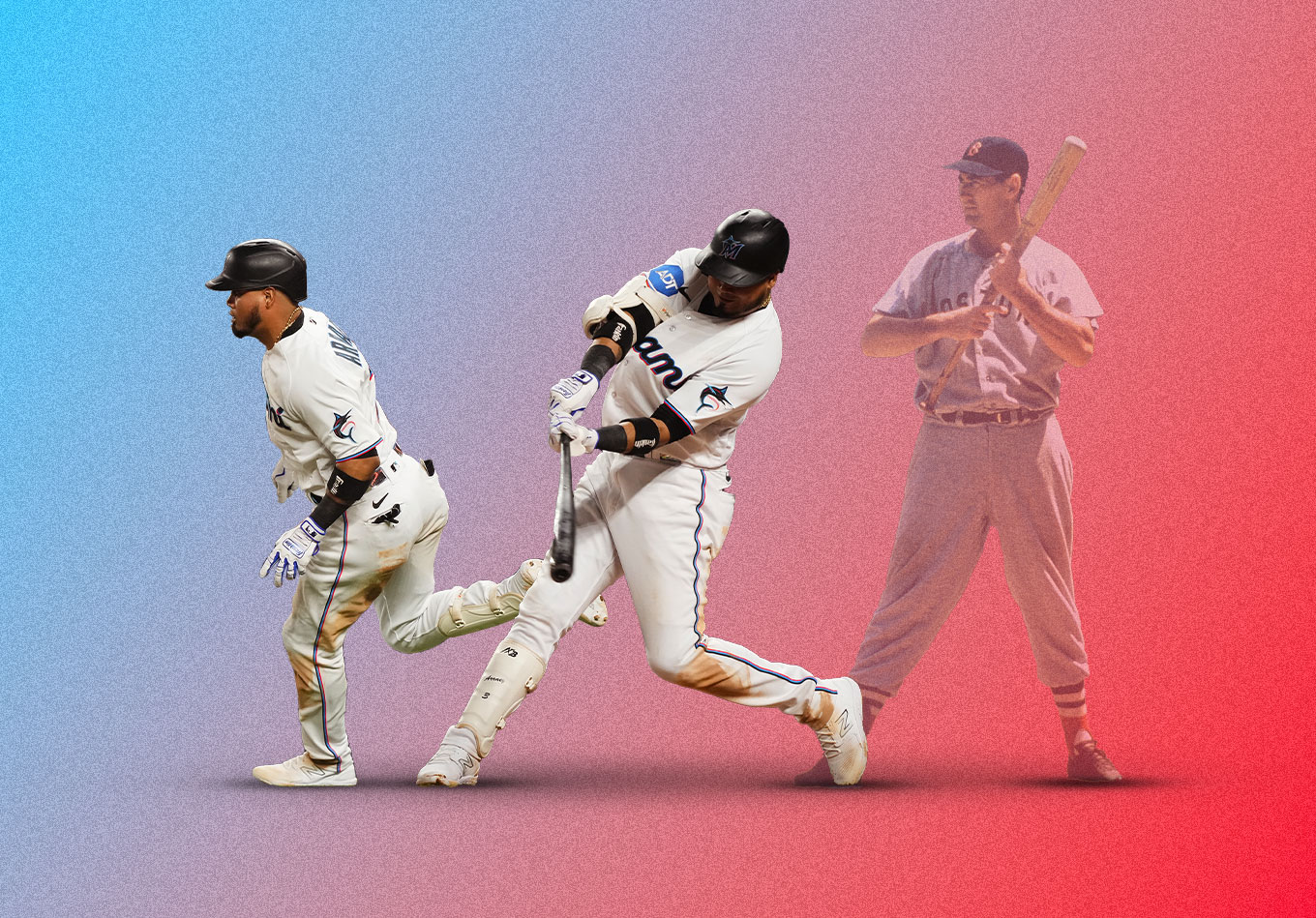After the Minnesota Twins and the Miami Marlins agreed to the offseason trade that saw Pablo Lopez go to the Twin Cities and Luis Arráez to South Beach, most folks saw the AL Central contenders as the winners of the transaction.
This sentiment became even stronger after Lopez’s brilliant start in the 2023 campaign. No one, however, said the Marlins got robbed because they saw a very solid contact hitter in Arráez.
Arráez, after all, was fresh off an All-Star appearance and AL batting title. He was the only reason New York Yankees slugger Aaron Judge didn’t win the Triple Crown last year.
Contact hitters, however, aren’t particularly appreciated in today’s game unless they have some power, or a solid OBP to accompany that high average. Arráez doesn’t really excel in those two areas.
Indeed, Arráez is a unicorn considering how the game is played today. The lowest batting average he has posted over the course of his MLB career was .294 in 2021. In the other four seasons he has participated, that number is well above .300.
His isolated power (IP) this season is a very low .087 and he ranks 113th out of 157 hitters in plate appearances per walk at 13.86. So what makes him so special? Well, he is not just your average contact hitter. He is, by far, MLB’s finest in the art of putting the bat on the ball.
During times in which most people don’t even reach .280, the second baseman from San Felipe, Venezuela, has no problem posting a mark over .300. Yet, what he has done to this point in 2023 has been nothing short of remarkable.
Heading into Friday’s action, Arráez is batting .397 with a .447 on-base percentage and a .483 slugging percentage for a .931 OPS while leading the Marlins to a surprising 43-33 mark in the NL East standings. Take a moment to appreciate the uniqueness of that line: He’s hitting almost .400, and no one has finished with an average over .400 in a full season since Ted Williams hit .406 in 1941.
He already has three five-hit performances across his game logs (versus the Oakland Athletics, Washington Nationals and Toronto Blue Jays between June 3-19), leaving him one shy of the all-time record for five-hit games in a season. Outfielders Ty Cobb (1922), Tony Gwynn (1993) and Ichiro Suzuki (2004) of the Seattle Mariners, and first baseman Stan Musial (1948) had four such efforts.
Is it too early to start considering Arráez as a candidate to be the first player to hit .400 or better in 82 years? Probably. Is what he is doing at the moment one of the most impressive individual performances we have seen in recent years? Well, yes.
The closest someone has finished at .400 since Teddy Ballgame did it has been Gwynn, who hit .394 in 1994 (a shortened season). Arráez has a monumental challenge in front of him, but there is no hitter more skilled than him to make a run at the sacred .400 mark.
Arráez was hitting .398 before going 1 for 3 with a walk in Thursday’s 6-4 win over the Pittsburgh Pirates. Batters have hit .398 or better through 75 team games of a given season (with a minimum of 233 plate appearances) 32 times, and Arráez is one of them. The most recent hitter to do it before him? Tony Fernandez (.405 AVG) in 1999! Baseball has migrated to a more power-oriented approach in which people swing for the fences, strike out a lot, and post low batting averages. Go tell that to Arráez, though.
If you want to sort it by date, the most recent guy besides Arráez to hit .398 or better through June 21 or later in the season was Todd Helton and Nomar Garciaparra in 2000.

Arráez also leads Ronald Acuna Jr. of the Atlanta Braves (.324) and Freddie Freeman of the Los Angeles Dodgers (.323) by .073 and .074 points, respectively. That’s easily on pace to be the widest margin between an MLB leader and second-place finisher in the modern era.
Maintaining a batting average of .400 or higher over a 162-game season has to be one of the toughest things in professional sports these days. Just ask Fernandez, who finished that 1999 campaign at .328 after hitting .405 over his first 100 contests.
There lies the challenge for Arráez: keeping it around .400 through the long, grueling weeks of the major league season. He had a bit of a rough patch recently that saw his average go down to the .370 range, only to pick things up again and lift it to .400 on June 19.
Working in his favor is his amazing contact+. This stat feeds from pitch velocity, movement, location, count and other factors and data to measure how good a player is at making contact with the ball. Arráez leads the league with his 116 mark (100 is average).
Another positive sign is his healthy 32.5% line-drive rate. Line drives are the best type of batted ball for what Arráez has done and is trying to achieve: they are harder to field and often fall for hits.
Arráez is an extremely disciplined hitter and that helps him avoid swinging at bad pitches and putting himself in vulnerable positions. His 99 discipline+ would be right around average, but it’s hard to ignore the fact he has 22 walks and 15 strikeouts in 267 at-bats (that’s not a typo) and has, by far, the lowest percentage of swings that miss in the majors at 7.1. The second-placed hitter, Nico Hoerner, is at 10.3%.

The Marlins infielder hits just about every pitch in the book. He has an above-average contact+ (over 100) against every type of offering, thrown by both lefties and righties.
While his below-average 84 BIP+ tells the story of a slap hitter with little slug – BIP means balls in play, and the stat uses the same elements as contact+ and discipline+ to study how much damage a hitter inflicts on contact – we are not here to discuss Arráez’s home run totals, RBIs or even stolen bases (he only has one). We are here to analyze his impressive ability to earn base hits and put wood on the ball.
Arráez’s 126 raw value+, a rate stat that uses contact and discipline data to assess performance on a per-pitch basis, ranks 35th in the league. It might not seem particularly impressive, but it really is when you consider that he is there almost exclusively because of his innate ability to make contact.
He also has things working against him on his quest for .400, though. BABIP regression could hit him eventually, especially considering he ranks in the third percentile with a mediocre 24.3% hard-hit rate, per Baseball Savant. His .414 BABIP to this date is .068 points higher than his .348 career mark and looks unsustainably high. As it comes down, so will his batting average.
Let’s agree on the fact that, in order to make history, Arráez will need to keep hitting line drives at a rate higher than 30% and also good luck. A lot of it.
He already won a batting title last year with a poor seventh percentile ranking in hard-hit rate, but we are not talking about repeating as the average champ: we’re talking about hitting .400 and that seems like a lot.
Regardless of whether he achieves his goal or not, it had been 24 years since someone had reached this point with a batting average as high as his, and that itself is monumentally relevant.
The odds are definitely against Arráez. Hitting is just too hard for a player to finish a season with a .400 average in modern baseball. However, the entire MLB universe will be watching, and there is nothing wrong with that.
Research support provided by Jesse Abrahams of Stats Perform. Enjoy this? Follow us on Twitter.
